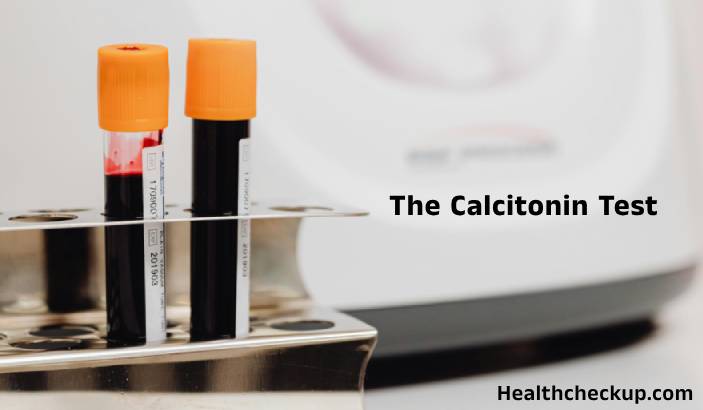The calcitonin test is a blood test used to measure the level of calcitonin, a hormone produced by the C-cells of the thyroid gland. This test plays a crucial role in diagnosing and managing certain thyroid disorders, especially medullary thyroid cancer (MTC). In this article, we’ll explore the purpose of the calcitonin test, the normal range, and how to interpret the results, using tabular representations as needed.
Purpose of the Calcitonin Test
- Diagnosis of Medullary Thyroid Cancer (MTC): The primary purpose of the calcitonin test is to detect high levels of calcitonin, which may indicate MTC, a rare type of thyroid cancer.
- Monitoring MTC Progression: The test is also used to track the progression of medullary thyroid cancer and assess treatment effectiveness.
- Detecting Familial Medullary Thyroid Carcinoma: The calcitonin test can help identify familial MTC, allowing for early detection in at-risk individuals.
- Guiding Treatment Decisions: The test results can guide surgical decisions, especially in patients with a family history of MTC.
Normal Range for Calcitonin Test
- Typical Values: The normal range for calcitonin in the blood varies based on age, gender, and laboratory methods. Below are common ranges:
| Group | Normal Calcitonin Range |
| Adult Males | 0-8 picograms per milliliter (pg/mL) |
| Adult Females | 0-5 pg/mL |
| Children | Varies with age, typically lower than adults |
- Factors Affecting Normal Range: Pregnancy, age, and certain medications can influence the calcitonin levels.
Interpreting Calcitonin Test Results
- High Calcitonin Levels:
- Indicate a higher risk of medullary thyroid cancer. The exact level can provide insights into the extent of the cancer and guide treatment decisions.
- Can also be associated with other conditions like C-cell hyperplasia or certain lung cancers.
- Low Calcitonin Levels:
- Generally suggest no significant thyroid issues, though a low level does not entirely rule out thyroid abnormalities.
- Follow-Up Testing:
- If calcitonin levels are elevated, further diagnostic tests such as thyroid ultrasound, fine-needle aspiration (FNA), or genetic testing may be needed.
- Treatment Monitoring:
- For patients undergoing treatment for MTC, decreasing calcitonin levels can indicate a positive response to therapy.
Procedure for the Calcitonin Test
- Blood Sample Collection:
- The test involves a simple blood draw, usually from a vein in the arm. The procedure is quick, typically taking only a few minutes.
- Laboratory Analysis:
- The blood sample is analyzed in a laboratory to measure calcitonin levels using specific immunoassay techniques.
- Duration:
- Results can take a few hours to a couple of days, depending on the laboratory’s workload and testing methods.
Risks Associated with the Calcitonin Test
- Minimal Risks:
- As with any blood test, there are minor risks such as pain, bruising, or bleeding at the needle insertion site.
- Infection:
- While rare, there’s a slight risk of infection at the puncture site, which can be minimized with proper sterile techniques.
- False Positives/Negatives:
- Technical errors or sample contamination can lead to inaccurate results, requiring further testing for confirmation.
- Emotional Stress:
- Given the association with cancer, awaiting test results can cause anxiety or stress.
Conclusion
The calcitonin test is a critical tool in diagnosing and managing medullary thyroid cancer and other thyroid-related disorders. Understanding the purpose, normal range, and potential results helps patients and healthcare providers make informed decisions about treatment and monitoring. If calcitonin levels are high, further diagnostic testing may be required to identify the underlying cause and guide appropriate treatment strategies.
For individuals undergoing a calcitonin test, clear communication with healthcare providers and genetic counseling for those with familial MTC can help manage the process and any associated anxiety. This comprehensive approach ensures that test results are accurately interpreted, and the best possible care is provided.
I specialize in writing about health, medical conditions, and healthcare, drawing extensively from scientific research. Over the course of my career, I have published widely on topics related to health, medicine, and education. My work has appeared in leading blogs and editorial columns.









